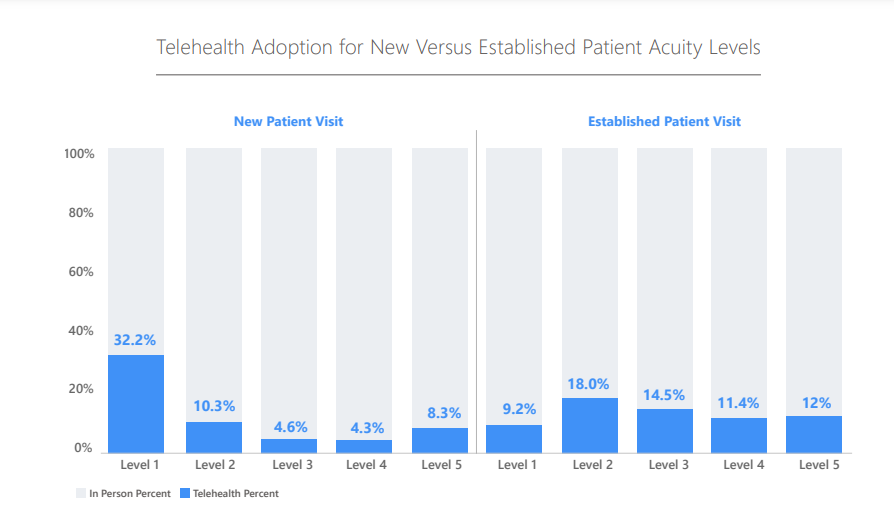Chief Researcher and Editor of the Portal:
Joaquim Cardoso MSc.
the health transformation — knowledge portal
November 3, 2022
Chartis Health
October 2022
Telehealth is an Opportunity for Onboarding New Low-Acuity Patients and Managing Higher-Acuity Patients with Established Relationships [US]

KEY OBSERVATIONS
- A greater range of patient acuity is managed via telehealth among patients with established provider relationships.
- New patients generally present as low acuity, with telehealth serving as a screening tool for triage.
- However, providers may have a reluctance to onboard higher-acuity new patients via telehealth than an in-person clinic visit.
New patients generally present as low acuity, with telehealth serving as a screening tool for triage.
However, providers may have a reluctance to onboard higher-acuity new patients via telehealth than an in-person clinic visit.
CONCLUSIONS & IMPLICATIONS
- A clear pattern is emerging that suggests higher-acuity care needs can be managed via telehealth, but only after a patient-provider relationship has already been established.
- Recent policy changes permitting those relationships to be established virtually has enabled a significant number of new patient virtual visits.
- Another key adoption trend for telehealth has been the onboarding of low acuity new patients.
- Virtual triage has been a necessity throughout the pandemic and will continue to be an important access point for new patients seeking care
A clear pattern is emerging that suggests higher-acuity care needs can be managed via telehealth, but only after a patient-provider relationship has already been established.
Another key adoption trend for telehealth has been the onboarding of low acuity new patients.












